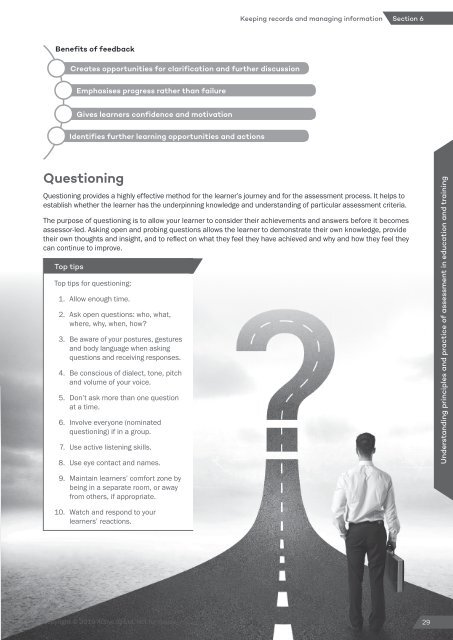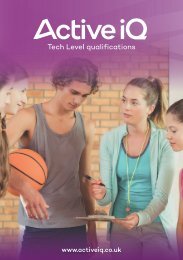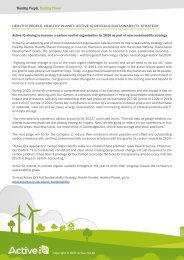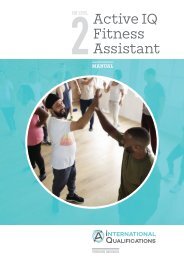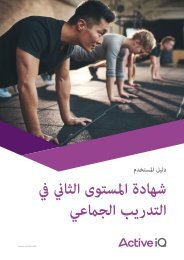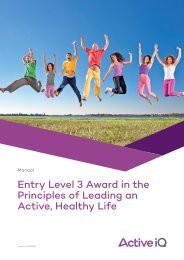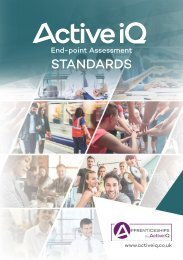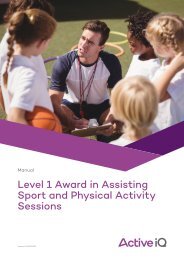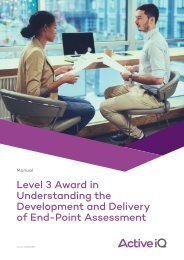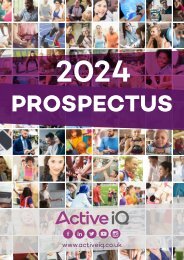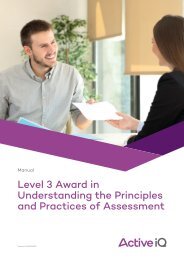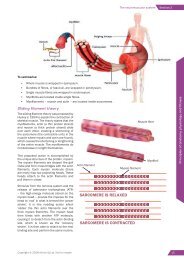Active IQ Level 3 Award in Assessing Vocationally Related Achievement (sample manual)
Create successful ePaper yourself
Turn your PDF publications into a flip-book with our unique Google optimized e-Paper software.
Keep<strong>in</strong>g records and manag<strong>in</strong>g <strong>in</strong>formation<br />
Section 6<br />
Benefits of feedback<br />
Creates opportunities for clarification and further discussion<br />
Emphasises progress rather than failure<br />
Gives learners confidence and motivation<br />
Identifies further learn<strong>in</strong>g opportunities and actions<br />
Question<strong>in</strong>g<br />
Question<strong>in</strong>g provides a highly effective method for the learner’s journey and for the assessment process. It helps to<br />
establish whether the learner has the underp<strong>in</strong>n<strong>in</strong>g knowledge and understand<strong>in</strong>g of particular assessment criteria.<br />
The purpose of question<strong>in</strong>g is to allow your learner to consider their achievements and answers before it becomes<br />
assessor-led. Ask<strong>in</strong>g open and prob<strong>in</strong>g questions allows the learner to demonstrate their own knowledge, provide<br />
their own thoughts and <strong>in</strong>sight, and to reflect on what they feel they have achieved and why and how they feel they<br />
can cont<strong>in</strong>ue to improve.<br />
Top tips<br />
Top tips for question<strong>in</strong>g:<br />
1. Allow enough time.<br />
2. Ask open questions: who, what,<br />
where, why, when, how?<br />
3. Be aware of your postures, gestures<br />
and body language when ask<strong>in</strong>g<br />
questions and receiv<strong>in</strong>g responses.<br />
4. Be conscious of dialect, tone, pitch<br />
and volume of your voice.<br />
5. Don’t ask more than one question<br />
at a time.<br />
6. Involve everyone (nom<strong>in</strong>ated<br />
question<strong>in</strong>g) if <strong>in</strong> a group.<br />
7. Use active listen<strong>in</strong>g skills.<br />
8. Use eye contact and names.<br />
Understand<strong>in</strong>g pr<strong>in</strong>ciples and practice of assessment <strong>in</strong> education and tra<strong>in</strong><strong>in</strong>g<br />
9. Ma<strong>in</strong>ta<strong>in</strong> learners’ comfort zone by<br />
be<strong>in</strong>g <strong>in</strong> a separate room, or away<br />
from others, if appropriate.<br />
10. Watch and respond to your<br />
learners’ reactions.<br />
Copyright © 2019 <strong>Active</strong> <strong>IQ</strong> Ltd. Not for resale 29


